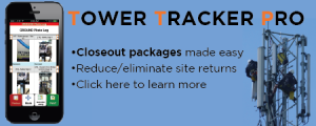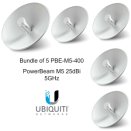This is an ongoing question that many people have been asking, with the shape of the industry rounding out to be 5G and massive MIMO, we will see where each application works and why. If you were to make an investment with your limited budget, what would it be, small cells or CRAN? Of course, it’s not black and white; you have an application for each one. That’s what I will discuss below.
What is a small cell?
A small cell is a stand-alone small cell site, usually very low power. It will have an integrated BBU and backhaul. It may have a router inside but, in most cases, it will connect to an external router, switch, or hub. It is a standalone unit that needs backhaul and a way to connect to the core or a controller at the core. Generally, this unit could be put anywhere and is built for indoor or outdoor use.
Learn small cells at:
- https://www.thinksmallcell.com/System/what-is-a-small-cell-or-femtocell.html
- https://www.thinksmallcell.com/Technology/a-quick-recap-on-new-and-upcoming-small-cell-technologies.html?awt_l=7P1V2&awt_m=J7bb0bboD_CA6G
- https://wade4wireless.com/2017/03/06/mounting-small-cells-in-a-city/
- https://wade4wireless.com/2016/10/11/deploying-5g-small-cells/
- https://wade4wireless.com/2018/03/26/increase-small-cell-value/
- https://wade4wireless.com/2016/05/24/art-king-is-the-king-of-enterprise-small-cells/
- https://wade4wireless.com/2016/01/04/small-cell-installation-checklist/
- https://wade4wireless.com/2015/11/19/free-the-lte-indoor-small-cells/
- https://wade4wireless.com/2015/07/27/small-cell-fronthaul-and-odas/
- https://wade4wireless.com/2015/11/12/wireless-deployment-handbook-for-lte-small-cells-and-das/
What is CRAN?
Here we get into a bit of discussion. You see, CRAN is generally Concentrated Radio Access Network. However, now we are looking at Cloud RAN, which could be C-RAN or cRAN. All the same. We don’t have enough letters to break them apart. So many people look at CRAN as a remote RAN, could be a remote radio head or a remote tower site.
Sign up for HostGator Today!
CRAN is where the radio head and antenna are remotely placed away from the BBUs. When I say remote, it means that they could be hundreds of kilometers apart, not at the base of a tower. The CRAN system is connected by fiber, muxes, and routers. Generally, dark fiber is to be lit. The BBU is controlling the radio heads altogether, and the link is its lifeline.
cRAN or C-RAN, (cloud RAN), is the same as above but the cloud will be running part of the BBU functions. This means that the cloud could be running some BBU functions to control the radio head and the BBU could offload some processing power.
Why the distinction? Because the cloud RAN is not working quite the way the OEMs had hoped. The BBU is being asked to do more and more specific functions that connect people’s data and calls to a specific area. This is no easy task.
CRAN and cRAN/C-RAN are similar in the fact that the radio head(s) stand alone.
Learn CRAN at:
- https://wade4wireless.com/2018/02/19/who-has-enough-spectrum-for-5g/
- https://wade4wireless.com/2015/07/27/small-cell-fronthaul-and-odas/
- https://wade4wireless.com/2015/11/12/wireless-deployment-handbook-for-lte-small-cells-and-das/
- http://www.senzafiliconsulting.com/Blog/tabid/64/articleType/ArticleView/articleId/229/C-RAN-Airvana-Taking-C-RAN-indoors-to-optimize-small-cell-performance.aspx
- https://dailywirelessnews.com/wp-content/uploads/2017/12/Mavenir-Whitepaper-5G-2017.pdf
- https://www.rcrwireless.com/20151222/featured/what-is-c-ran-tag4
- https://www.rcrwireless.com/20160803/analyst-angle/analyst-angle-cran-stand-anyhow-tag9
- https://www.commscope.com/Solutions/What-Are-C-RAN-Small-Cells/
- https://www.sdxcentral.com/5g/definitions/cran/
What is the difference?
I thought you would never ask! The difference is not only is the small cell a stand-alone unit that just needs backhaul to a controller or core, but it generally is lower power. It is also limited in the throughput it can handle.
CRAN is usually a larger radio head with full macro functionality and loading because it is connected to a macro BBU.
To sum it up, the CRAN radio head has full macro functionality with a seriously dedicated fiber backhaul whilst a small cell is lower power and lower loading stand-alone unit.
- Small cell, lower power, all-inclusive unit, less loading, and processing power than a macro. Backhaul just needs to connect to the core; timing is not so critical.
- CRAN – controlled by a macro BBU with full loading and higher power units, full macro capability. Backhaul is critical, needs to have low latency and connected to the BBU, then the BBU will connect to the core.
What are the advantages and disadvantages of small cells?
The small cell can be used for 2 reasons; they can be put in for coverage or for offloading a macro site. Keep both in mind when reading the next part.
- Advantages are:
- The device is smaller, cheaper, versatile.
- Can offload traffic from the macro?
- Cheaper to install, deploy, maintain.
- Backhaul is critical but more versatile. Can be put many miles from the core.
- Disadvantages are:
- Payback is low.
- Limited loading capability.
- Generally low power, (could be advantage or disadvantage).
- Limited coverage.
What are the advantages and disadvantages of CRAN?
The CRAN is generally a full function macro sector, (or sectors) in the system. Remember that this is a macro system that has been split to serve multiple areas at the same time.
- Advantages are:
- Full macro capability.
- Loading is that of a macro.
- Full power is possible at a site.
- Complete macro functionality at the radio head
- Disadvantages are:
- The limited distance between the radio head and the BBU, several kilometers depending on the OEM.
- Fronthaul to the BBU is critical, low latency, dark fiber.
- Very expensive to deploy a new system.
- Planning matters, need to plan out the system.
How do I choose which to deploy?
This is the big question. All the stuff above will help you weigh in on this decision, but here is the real head-scratcher. When do I deploy a CRAN system and when do I deploy a small cell? Let’s look at the scenarios below and make some decisions.
Scenarios:
Looking at each scenario, let’s see how each one plays out.
- Will loading be an issue? Is this a city with a lot of traffic that will have heavy data and voice traffic?
- If yes, then CRAN is a better option since it can take loading of subscribers and data from a macro site.
- If no or the answer is sometimes, then small cells may be a more affordable option with a better payback.
- Is coverage the issue outdoors?
- If yes and you need a higher power and have a higher site, (need to be sure the public is safe from an RF radiation), then a CRAN would be a great option.
- If no and you are covering a very specific are like a town square or indoors, then a small cell makes a lot of sense.
- Are you going to deploy across the entire city or are?
- If yes and you need to deploy for loading and coverage, then the CRAN is the ideal option.
- If no and you are only covering a specific area, then small cells would work.
- What if I need indoor coverage?
- If this is a convention center or a stadium, then CRAN makes a lot of sense because of the massive
- If it’s a business or office building or train or bus station that is not always busy, then small cells make the most sense.
What about the cost and payback?
Here is what you need to understand, the cost differences between each system and the payback. This will help you understand why the scenario makes a difference.
CRAN systems and costs:
The CRAN system is more than just one macro system in an area. It consists of several BBUs and a large fiber network. The system must be thought out of an area or a stadium. It’s not something you just throw in with little thought. The system should be planned for the job it has to do.
- The system will have
- BBU site will be in one spot in a city or stadium – A set of BBUs, called a BBU pool or a BBU hotel all in one area. It’s more than the BBUs; it is a power plant, backup power which is generally a generator and batteries, a complete set of fiber muxes that go out to the radio heads as well as a larger, 10Gbps or higher, backhaul. All of this in one large closet that needs to have the temperature maintained. It will also have servers and other equipment in their to support the BBUs. You could have 1 BBU to 10s of BBUs all in one space connecting to many radio heads across a region or stadium.
- Remote radio head – could have the radios heads at a tower with 3 sectors, this is not common yet, but the industry wants to get there to get equipment off the ground. The more common scenario is to have a single or double radio head on a pole in the city that gives it macro like coverage for loading and coverage. This goes beyond the densification to serve as a smaller macro site with full macro capability. You still need power, possibly batteries, and routers at the radio head site. You will have antennas to connect to the radio heads. Fiber to the router, then fiber to the radio head, then coax to the antenna, unless it is an active antenna like what massive MIMO will use.
- Backhaul – this runs from the BBU site to the core and should be 10Gbps or more.
- Fronthaul – this is generally run from the BBU site to each individual radio head site. It will take a series of muxes to send out the signals across fiber to remote radio heads. The latency between the BBU and remote radio head is critical; there is a distance limitation due to the timing of the signals from the BBU to the radio head. While this is being improved by the OEMs, it is still a limiting factor.
As you can guess, this is very expensive to install. The payback could look like this; one CRAN system could replace tower sites across the city. It would also allow heavy loading at each location. This is an ideal setup for parts of major cities where there are no towers or accessible rooftop. It is also an ideal solution for areas that have heavy loading, like a large stadium with over 30,000 people. In a stadium, you may be able to connect the fiber directly from the BBU to the remote radio head but check with your OEM.![]()
Small Cell systems and costs:
As you have probably guessed, small cells are much cheaper and easier to deploy. They generally are easier to plan to deploy.
- The system will have:
- A small cell – with an antenna, could be integrated or could be a separate antenna.
- Backhaul – this could be dark fiber lit for this purpose, could be shared backhaul or could be a VPN back to the core or server, depending on the application.
That’s it, easy and cheap considering. I can’t do much about the site acquisition part, that always cost a lot of money. However, the small cells are generally very cost-effective. They cost less to install, and the engineering is generally very reasonable.
What’s the cost difference?
Here is how to look at this when concerning the cost difference. Therefore, the payback is critical. It’s the difference between putting in a macro and a small cell site. Keep in mind that these are all estimates, not hard costs. Prices differ depending on OEM, region, design, planning, loading, coverage, rent, and so on.
- Small cells
- Equipment, generally less than $15K per site
- Physical installation, generally less than $5K per site
- Backhaul, generally $5K to $15K to install and could be $300 to $3K per month.
- Coverage, less than .1 miles or a room in a building.
- Rent, generally $30 to $3K a month. It really does vary that much!
- CRAN
- BBU site equipment – $30 to $100K.
- BBU Site Installation – $3K to $50K.
- BBU site utility power – $3K to $13K.
- BBU site routers, muxes, and backhaul/fronthaul equipment generally $3K to $50K, maybe more depending on load.
- BBU site rent is generally $2K to $$10K each month.
- Remote radio head equipment $10K to $30K with antenna and hardware
- Remote Radio routers generally $1K to $5K
- Remote radio head installation generally $1K to $5K unless it’s a tower
- Remote Radio Head rent could be $500 to $3K each month unless it’s a remote tower, then it’s $1K to $3K each month.
- Backhaul and fronthaul connection generally $1K to $50K each month depending on how many radio heads, substantial backhaul, and all the dark fiber needed to be lit.
There you go! It’s not as tight as you would like it, but you get the idea. CRAN is expensive, but the payback is there for the situation that you need it.
However, as attractive as the small cell looks, its payback is not there. The small cells serve a purpose as an adder, but not as the primary system. That’s why the small cell is an excellent solution for its purpose which could be to offload the macro site or act as a fill site. It’s a great indoor solution.
If you don’t know it, the CRAN systems are a secret weapon of the carriers here in the USA. You see, the CRAN offers a lot more diversity and loading, all the features of a macro site and the payback is far higher. It is the system that allows the radio heads to handle thousands of users at a time versus a small cell which handles hundreds at a time.
It’s all about the Value!
The value comes from the solution, the solution is determined by the application. What do you need? Where do you need it? How many people will use it at any given time? You’ve got to add value! The value helps to determine the payback. Then you have a system that makes sense, that hopefully, you won’t have to replace in 2 years because it’s insufficient. Also, a system which you are paying an arm and a leg for because the loading is so small that the system won’t pay for itself.
Value is in the design, the use of the system. If you have the right system for the right application, then the payback makes sense. Let’s plan accordingly. There are always surprises and limitations that could hamper the desired outcome, but we do the best we can with the knowledge we have. It’s all we can ask for.
I hope this helps you bridge the gap between the spend versus payback!
Remember, if you need a technology analyst, send me an email at Wade@techfecta.com.
Be smart, be safe, and pay attention!
See Ya!
Sign-up to get all your updates!
The foundations below do beautiful work, helping families in their time of need. Climbers often get seriously injured or die on the job. The foundations below support those families in their time of greatest need!
Hubble Foundation helps the families of climbers in a time of need and beyond with financial support and counseling!
Tower Family Foundation supports the families of tower climbers at the time of crisis when a climber falls with financial assistance and more.








 Putting together your smart city tech solutions, planning, development, and more….TechFecta! Guiding you to a better plan through consulting!
Putting together your smart city tech solutions, planning, development, and more….TechFecta! Guiding you to a better plan through consulting!















